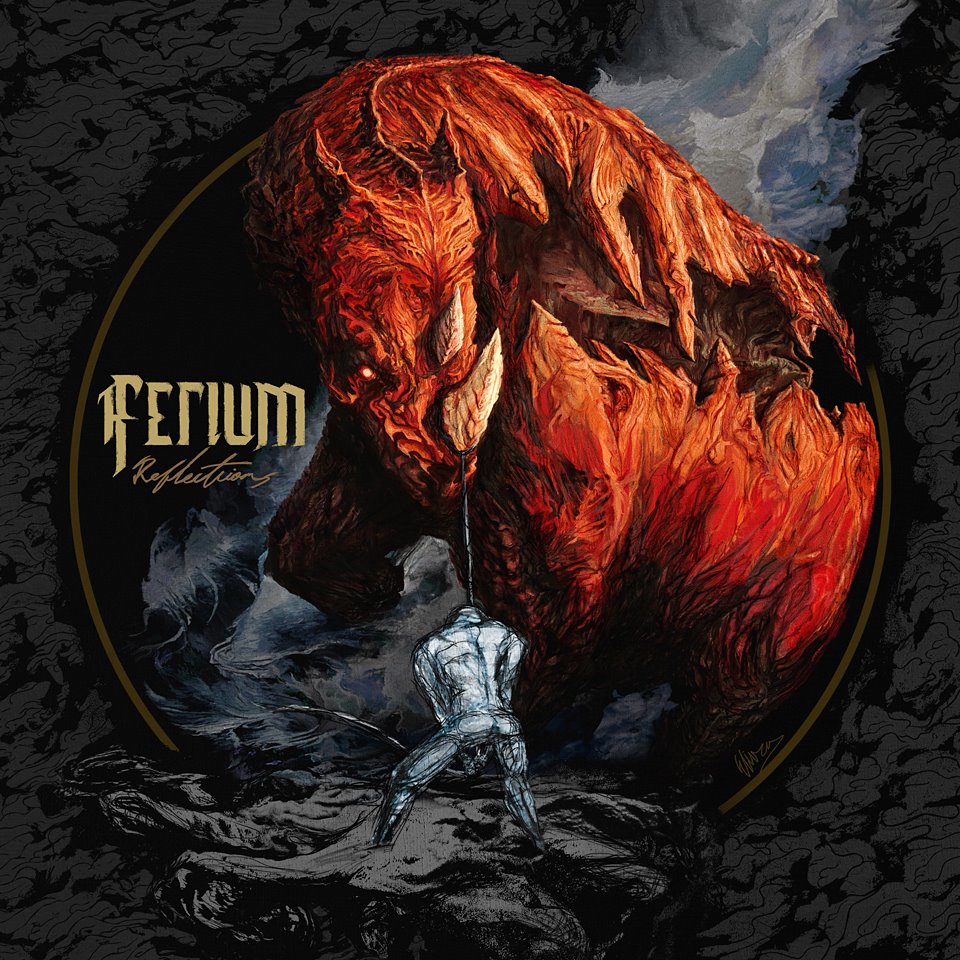
Music can be the worst method of torture.
[youtube http://www.youtube.com/watch?v=RG7fzQVIXxc]
Dread

We all know what it’s like to see a great story ruined on film. We’ve all experienced how much it hurts. After the first fifteen minutes of The Great Gatsby, I felt like drowning myself in a bathtub or eviscerating myself with a kitchen knife or drinking acid or anything fatal enough to put me out of the supreme misery that was wasting time on this offensively misguided interpretation of a classic novel that I’m not even a huge fan of. For this reason, I feel deeply for the people who loved Clive Barker’s short story from the second volume of his Books of Blood collections and went into this dreadful (no, not a compliment in the context of the movie) experience expecting a worthy adaptation.
Dread is without a doubt the most boring piece of cinema I have ever had the misfortune to watch. It was a pain, and I haven’t even read the short story it is based on (though I do want to check it out because the premise is definitely promising — if only the execution were better.) You see, despite claiming otherwise when I review them, I like exceedingly bad horror movies. They are fun. I like watching them with my friends over pizza and laughing at the particularly terrible special effects or absurd scenes of gore in between conversations. This one, though, isn’t even suited as background entertainment. It’s infuriating in its complete and utter mediocrity.
It’s trying too hard, first and foremost. And it makes sense — the subject matter requires a certain amount of “trying.” It’s about people’s innermost fears and hang-ups, complex psychological territory that is as interesting to explore as it is difficult to cram in compact pieces into a plot and translate gracefully to the screen. From what I’ve read, Barker nailed it in his short story, but it does not work here despite its definite potential, so I feel that I can confidently blame director Anthony DiBlasi for fucking up. The film starts out incredibly slow in an attempt to build tension and shed light on who the characters are, except instead of succeeding in doing so, it works as a soporific, so it takes a lot of strength and willpower to even make it to what I suppose could be described as a semblance of action. And when it hits, it seems out of place because of the slow pace which had marked the film up until that point (and still does besides the short bursts of actual events.)
So not only does it not fulfill its intended purpose, as mentioned before, it is also unbelievably boring. And I think that effect is magnified because it fails at being deep and interesting despite trying so hard. The film is dunked in dark lighting which is probably supposed to help build the sombre atmosphere, when in fact, it does nothing but irritate your eyes. The actors are strategically mumbly and angsty but end up appearing so completely uninspired, there is no point at which you can muster a bare minimum of fucks to give about their inner lives. You don’t care to find out what their weird phobias are or where they’re coming from. You don’t care about their relationships with each other. And that is the downfall of a story which relies so heavily on build-up and toned-down analysis of the human mind.
My suggestion: rather than renting and watching this movie, you can try stabbing yourself in the eye for 108 minutes. When you’re done, you will have sustained the same trauma while doing something more productive with your time.
![]()
![]()
![]()
Gold Panda – Half Of Where You Live

There’s simply no way to avoid wonky music at the moment. Chillwave is a big thing right now and it’s a welcome refresher for sweaty summer nights. Compared to Lucky Shiner; the new album Half Of Where You Live by electronic wunderkind Gold Panda has a lesser pop approach, but is way more chilly and dreamy and stimulates every single muscle to dance your pants off. The key track Brazil delivers the best example of the quirkiness and hypnotic effect this album has to offer. It’s highly addictive, to say the least.
If you’re into offbeats, Community might be the best thing to expect. As already mentioned, Gold Panda knows how to apply a gripping ambience into his tunes and it might be too crazy to claim this, but I somehow feel the urge to call this music as psychedelic dance music. The main reason for this thesis are the cleverly inserted elements of Asian music that make the listener feel like he’s in India or Thailand, without plunging too much into world music kitsch.
This album really has the potential to become one of my favourites for this year and I recommend to every single one of you to see this bloke on stage, if you can. You won’t be disappointed and it will be the cheapest and fastest trip to Asia you’ll ever experience!
[youtube http://www.youtube.com/watch?v=NL26UcEwrBQ]
Counterparts – The Difference Between Hell And Home

If you had asked me a few months ago to recommend you a melodic hardcore band I would have had to tell you that I really don’t know any good ones; maybe I would have told you that Close Your Eyes might be something for you…but today I can confidently tell you that Counterparts are the band that you must absolutely check out. Specifically their new record The Difference Between Hell And Home.
To cut to the chase: the five Canadians have even further improved their musical prowess in comparison to the predecessor The Current Will Carry Us. Every single and drumbeat sounds just right and contributes to making the entirety of the eleven songs a beautiful masterpiece. Which results in the fact that both the heavy and melodic parts go hand in hand as if they were best friends, so to speak, without following the good old “melodic-breakdown-heavy” formula. The production is, I would say, the most balanced one out of their three endeavors thus far: every instrument is clearly audible and well accentuated.
The main selling point, to me, for Counterparts are their very strong lyrics…this has always been the case and it didn’t change on this album. Writing about them wouldn’t do them justice, so I strongly urge you to give them a thorough listen, or preferably read them in the booklet. At least to me they feature a lot of topics that I can personally identify with, whether that is good or not is not for me to tell.
To wrap it up: if you have never really given the genre a chance because you were unsure where to start…look no further. TDBHAH is hands-down as close as it gets to being a perfect representation of this type of music. But, as I said above, you only get the full experience if you pay attention to the message as well. For more info you can visit the band’s Facebook page and get an impression by watching the video below. To quote the people from South Park: blame Canada…for good music in this case.
[youtube http://www.youtube.com/watch?v=qpZTJKPLVFc]
Trash Monday LXXVIII

Ever wondered why no Portuguese woman ever won the “Miss World” award? May these mofos singing about the Portuguese beauty be your answer!
[youtube http://www.youtube.com/watch?feature=player_detailpage&v=UigKZt7FtoQ]
Tell

Last week was pretty intense and quite stressful for me and I didn’t find the time to watch and analyse a whole movie. I even promised a friend to re-watch Von Trier‘s Antichrist, to review it and to note down some of my thoughts but yeah, I simply couldn’t balance it. Nonetheless, I don’t want to disappoint you by not posting anything, so I decided to recommend you a movie instead of reviewing it.
Tell (2012) is low-budget, 32 minute psychological horror film by writer, director and editor Ryan Connolly who is probably best known for the internet shows Film Riot and Film State. Tell is loosely basesd on Poe’s short story The Tell-Tale Heart and was made available via YouTube.
“Connolly’s do-it-yourself pragmatism is evident with almost every aspect the film: a single, readily available location, a small cast, no showy special effects. It’s the amateur filmmakers handbook played to perfection, relying on classic methods of suspense to grip the audience–the kind of flick where you cover your eyes with your hands, but still peek through the gaps of your fingers. Connolly specifically chose to shoot the film on an HDV camera with a letus 35mm adapter as opposed to a big sensor DSLR in order to capture the grain of old-school horror movies. It works. The mood of the film is precise; the cinematography and color grading are both technical high points. Contributing to the overall mood is the film’s score, a fantastically eerie soundtrack from UK based composer, Daniel James. Upon completion of the project, it took Connolly 6 months to locate and finalize his post audio team. The wait was worth it.“ Ivan Kander via shortoftheweek
I absolutely agree with Ivan and even though Tell is not perfect, I refer to the cast which (besides the main character) is quite weak, the foreseeability and the few lengths, its cinematography and the score are simply amazing! Give it a try!
![]()
![]()
![]()
Bosnian Rainbows – Bosnian Rainbows

The Mars Volta are dead, time for Omar Rodriguez Lopez to start another of his numerous personal projects. However, Bosnian Rainbows is a band in which he leaves the foreground to others, first of all Teri Gender Bender from Le Butcherettes, escorted by keyboarder Nicci Kasper and the one-arm drummer-while-keyboarding-with-the-other-one, Deantoni Parks. All together, the quartet plays a very hypnotic mixture between pop, synthpop, postpunk and progressive rock, although the “jamy” character of the last one apparently is way more present on stage than on this self titled debut.
The playfulness and creativity in which the front singer is covered during the whole album certainly defines the band’s character. Furthermore, the love for details provides many different spaces to discover synthetic and hypnotic secrets for the lovers of the genre, not to forget beats, sound walls and effective guitars. Still, the songs always have a clear line from the beginning to the end as a base frame, even though one sometimes misses a certain step to craziness. However, this may be due to my personal love considering The Mars Volta’s unpredictability. One obviously shouldn’t compare those two bands.
Rodriguez Lopez, as already stated, pulls the strings in the background, but never loses presence at any moment. In songs like I Cry For You one can even hear a certain will to break out and let the rock guitar beat the synthies, making the song sounding like a relationship crisis between guitar genius and electronic superiority. This may sound negative at first, but in fact this is one of the strongest songs of the LP.
In others however, as already suggested, a certain courage to go further is highly missed in my ears. The songs sometimes lose themselves in synthpop hymns that every one of us has already heard over the years. Nevertheless, Omar Rodriguez Lopez has never operated a really bad project, which is still the case in 2013. For lovers of the genre, Bosnian Rainbows will certainly deliver much joy with this first album and hopefully also with future outputs.
Ferium – Reflections

At the Scarred release party on June 1st there was one band that took the majority of the people I talked to by surprise, if you were there you know that I can only be talking about the Israelis Ferium, who were kind enough to provide many guests of the show with a free copy of their debut album Reflections.
The quintet plays, rather modern, death metal and takes no prisoners. While every song has a clearly distinguishable melody to it, all twelve songs are very much straight-forward thus leaving you no time to rest. While this is not relevant to the album itself I can say that the tracks work extremely well in a live setting; my neck and I can vouch for that.
On an instrumental level the band primarily moves between groovy, heavy and partially (caution made-up term) djenty guitars before bursting into full melodic explosions during their solos. The bass is, even for me, clearly audible throughout the fifty-three minutes but without being too much in the foreground. Production-wise all three instruments are very well orchestrated, especially if you consider that, as far as I know, the entire album is self-produced. The drums are on a pretty high technical level and during some songs even have a certain jazzy feel to them. By that I mean that there are quite a few off-beat rhythms and unexpected fills. The only, however small, criticism I have is that they are slightly under-produced in comparison to the stringed instruments…by far not bad, but not quite as strong as would have seemed ideal.
There is not a lot I can say about the vocals since they fit the ensemble perfectly and are executed flawlessly. They mainly stay in the guttural area but on a few occasions you can hear squeals and screeches. If I had to name a local counterpart, albeit defunct by now, I would say that Ex Inferis‘s Fab should give you an idea.
In conclusion I can only say that you should definitely give this band a go if you are into modern death metal or if you maybe want to discover something new. You can find more info about the band on their Facebook page and you can get an idea of what I just wrote about by giving the song below a listen.
[youtube http://www.youtube.com/watch?v=QQwHTg85wxQ]
Trash Monday LXXVII

Epic story. Epic music. Epic costumes. Especially those of the band.
[youtube http://www.youtube.com/watch?v=Nhq1uWY9wHg]
Run

Since I have to try and dodge the short film review spoiler trap, there’s not much I can reveal about Run except that it’s about a backpacker who writes to his mother about his adventures on the road. It was single-handedly written, shot and edited by UK filmmaker Mat Johns for the 2012 edition of the Halloween KinoKabaret event in which he’s been taking part since 2006, filmed with a Canon EOS 5D Mark II and the help of a shoulder rig, and done on a zero budget in under four days.
I’ll skip the beating around the bush business and say that I am impressed. Flat-out impressed. I’m floored that a compact 6:45 minute watch managed to have such a profound emotional impact on me. The visceral handheld cinematography, the gentle but distinctly eerie voiceover and the main actor’s performance build an incredible atmosphere that takes a painful turn halfway through. The only thing I am conflicted about is the soundtrack — I’m generally not a big fan of background music because I find it emotionally manipulative and imposing in a bad way, as though it’s trying to dictate how the viewer should feel — but ultimately, the melancholic piano piece only adds to the twisted beauty of this short.
There’s no use in writing more as Run speaks for itself. Even British national treasure Stephen Fry loved it so much that he sent it out to his over 5 million Twitter followers. Mat Johns has created a short film which is heart-destroying in its magnificence, and I strongly encourage you to watch it.
![]()
![]()
![]()